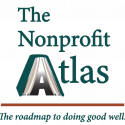11 Strategic Ways For Nonprofits To Boost Email Newsletter Engagement

Nonprofit organizations today have countless ways to connect with internal and external stakeholders. While digital marketing through social media and text messaging has become increasingly popular, email marketing remains a powerful tool for directly engaging supporters.
However, with emails often landing in spam folders or being deleted unread, nonprofits must adopt creative strategies to capture attention and drive engagement. To help, 11 Forbes Nonprofit Council members share their best advice for increasing email open rates and encouraging reader interaction.
1. Provide Genuine Value
To increase engagement, ensure every email delivers meaningful value. Go beyond standard updates and donation requests—offer content that enhances your readers’ lives or careers. This might include industry insights, exclusive educational resources, job opportunities, or actionable advice they won’t find elsewhere. The key is providing practical, relevant takeaways.
— Jennifer Gremmert, Energy Outreach Colorado
2. Write a Compelling Subject Line
A strong subject line is crucial for grabbing attention. A well-crafted hook encourages recipients to open the email. Ensure your subject line is relevant to the content and offers value. If you’re struggling with creativity, consider using AI tools to generate ideas.
— Tara Chalakani, Preferred Behavioral Health Group
3. Personalize the Greeting
Including a personalized heading or greeting makes recipients feel like the message was crafted just for them. This small touch fosters a sense of connection and reduces the likelihood of being dismissed as another mass email.
— Kimberly Lewis, Goodwill Industries of East Texas, Inc.
4. Keep Messages Clear and Transparent
Clarity is crucial in today’s fast-paced digital world. Ensure your email grabs attention while making key points and calls to action immediately clear. With more people using AI to summarize emails, transparency ensures your message is understood and acted upon.
— Karen Cochran, Philanthropy Innovators
5. Use a Real Sender Name
Rather than sending emails from a generic organization account, attribute them to a real person—such as the CEO or a key leader. This personal touch increases open rates and often encourages direct responses. Consider setting up a dedicated email address for this purpose.
— Nicole Suydam, Goodwill of Orange County
6. Personalize the Content
Beyond catchy subject lines and a consistent schedule, content personalization is essential. For example, incorporating local community updates helps readers see how they fit into your broader mission. People engage more when they feel connected to the message.
— Paula Schneider, Susan G. Komen
7. Use Storytelling
Powerful storytelling captures attention and keeps readers engaged. Share compelling narratives that resonate with your audience. However, remember that what appeals to your internal team may not be the same hook that works for your external audience. Always include clear calls to action.
— Sarah Jefferson, Ashoka
8. Spark Curiosity
People love a good mystery! Craft subject lines that pique curiosity or hint at solving a problem your audience cares about. A pre-header that teases the content inside can further entice readers to open the email.
— Michael Bellavia, HelpGood
9. Maintain Consistency
A predictable email schedule builds anticipation. Avoid sending only a generic monthly newsletter—make each edition a compelling call to action. If your title isn’t engaging, the delete button will win.
— Rhonda Vetere, Laureus Sport For Good
10. Share Across Multiple Platforms
Expand your newsletter’s reach beyond email. Share the link via text messages, social media, and your website. Highlight key updates and encourage readers to click for more details. Using interactive content, such as videos, can further boost engagement.
— Erin Davison, Scouting America
11. Integrate Email With Your Web Presence
Effective communication requires multiple touchpoints. While email and websites remain essential, they are no longer sufficient alone. Use print materials, podcasts, blogs, and social media to create a well-rounded engagement strategy that reaches all stakeholders.
— Aaron Alejandro, Texas FFA Foundation
By implementing these expert-backed strategies, nonprofits can enhance their email marketing efforts, increase open rates, and foster deeper connections with their supporters.
Source: Forbes
The Nonprofit Atlas connects the dots for any “do-gooders” to do the most good. We provide the roadmap to doing good well. We simplify the work of securing resources, relationships, and best practices that fuel a mission and realize a vision. See us in action with a FREE 30-minute consultation.
